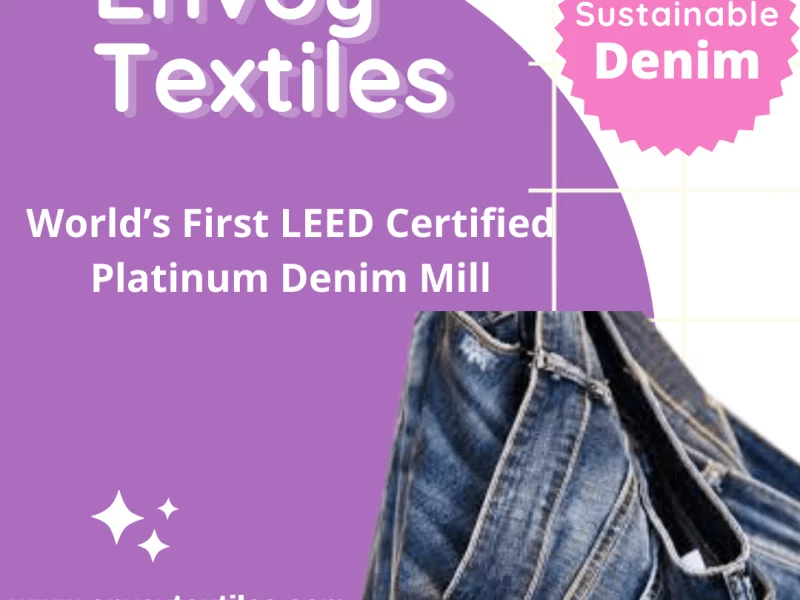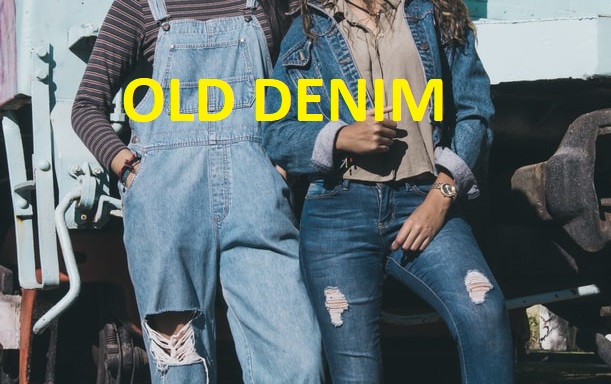Most of us get curious about the quality of jeans, or how they are made.
For those who know, Jeans are made of a fabric named denim.
But is that all?
In this article, we are going to talk about what Denim Fabric is, the main features of denim fabric, how it is made, and how you can identify a pair of perfectly woven denim jeans, and where to find the best denim fabric.
Let’s dive in.
What is Denim Fabric
Denim is a sort of woven twill-type fabric, typically made of cotton. Usually, two types of yarns are woven together to form the denim fabric. In that case, the first yarn that goes over the top is called the weft, and the yarn that is woven under the first one that goes downward is called the warp.
In short, denim is usually an indigo-dyed yarn, that’s why they always look blue. That means, the downward yarn which is the warp, is dyed before they are woven into and looks blue. Whereas, the weft which is the top one, is not indigo-dyed which is why they don’t look blue, and they are not bleached either.
Usually, denim is a durable fabric and produces a certain, subtle diagonal ribbing pattern. The twill weave shows that the weaving is warp-facing, meaning the warp threads hide two or more warp threads, therefore it is more visible on the right side. The makers all over the world always dye only one set of yarn which is the warp. This is also the reason the denim jeans look blue on the front, and white on its back.
Main Features of Denim Fabric
Denim fabric is usually rough, woven from strong and sturdy indigo-dyed cotton yarn. The high mass per unit area shows how tough denim fabric is.
Denim is now produced in greater quantities than any other type of fabric in the world. Its long-term fame has raised it to the prestige of a casual clothing fashion fabric.
But that doesn’t mean denim can only be yarn-dyed cotton. It can be cotton-polyester blend fabric as well, for its durable heavyweight weave.
But there’s more to the main features.
Denim comes in many variety of weights starting from 203.46 gm/m2 (6 oz/yd2) to 474.74 gm/m2 (14 6 oz/yd2). Even it can range more in 2:1 or 3:1 interlacing patterns. Denim fabric can be napped, printed, and blended with spandex for extra stretch or any other yarns that help in stretching. You can add your cherry on the top to make your denim more fashionable.
It is frequently left-hand twill with a blue (indigo) warp and white weft for use in a variety of weights of apparel. It’s warp-faced twill, with colored warp yarns on the front and white weft yarns on the back
How Denim Fabric is Made
Denim fabric is made usually with cotton going through multiple stages: first, you have to harvest the cotton on the farm, then separate the cotton fiber from the seeds, then spin the yarns, dye it and in the end, treat the yarn to prevent the fabric from shrinking, which is called Sanforisation. It’s a process that Sanford Lockwood Cluett once patented, which is to manufacture cotton from natural fibers or synthetic ones. That process helps the stretching, shrinking, and fixing to keep the fabric from diminishing or shrinking on its first wash.
Many processes come in while making denim fabric, these are:
Yarn Manufacturing
In the yarning process, cotton takes the big share in nearly all of the yarn in denim. In that case, some denim yarn might contain elastic components, not more than 3%, to give the final woven product to stretch comfortably.
A great example would be spandex. Spandex is usually a synthetic fiber that gives you elasticity when you wear a pair of jeans. Even a small portion of spandex can stretch the yarn up to 15% more capacity.
Dyeing
While we talk about the dyeing process, there are usually two types of dyeing. One is Sulphur dyeing and the other one is indigo dyeing.
The most conventional one in the dyeing process is the Indigo dyeing, creating blue hues in jeans. This dyeing is done by using plants from the class called “Indigofera genus”, mostly seen in South East Asia with plants named Indigofera Tinctoria, a plant with dried and fermented leaves. This global method is used and applied by all jeans manufacturers all over the world. Even though it’s natural, nowadays denim is now usually dyed with synthetic indigo dye. The thing that remains the same is the process, where the yarn goes through dipping and oxidation stages. That tells us that the more you dip the yarn, the stronger you get in color.
On the contrary, Sulphur dying, also called color dying, is done to bring different colors to denim like white, black, or even pink.
Weaving
After the dyeing process, the stage that turns the yarn into the fabric after production is called weaving. This is usually the technical term where manufacturers interlace two sets at a straight vertical angle, meaning a straight 90° angle.
Just like we discussed before, there are two types of yarn as usual that are involved here. Remember we talked about weft and wrap? This is the process where the yarn runs across the top, and the wrap goes under and over the yarn continuously downwards. Manufacturers usually love to call it the “Warp and Weft” method.
Where can I Get Denim Fabric
You can find hundreds of denim fabrics offered by manufacturers all over the world. But if you’re having trouble finding them, Envoy Textiles Limited is here to help. Envoy Textiles Limited is the World’s first LEED-certified denim mill, with a huge capacity of 4.5 million of 100% export quality yards per month. Envoy covers facilities for denim production to a greater length, usually from dyeing to finishing and lab-testing. You’re always welcome to head over to Envoy’s official website if you’re looking for the best denim fabric.




